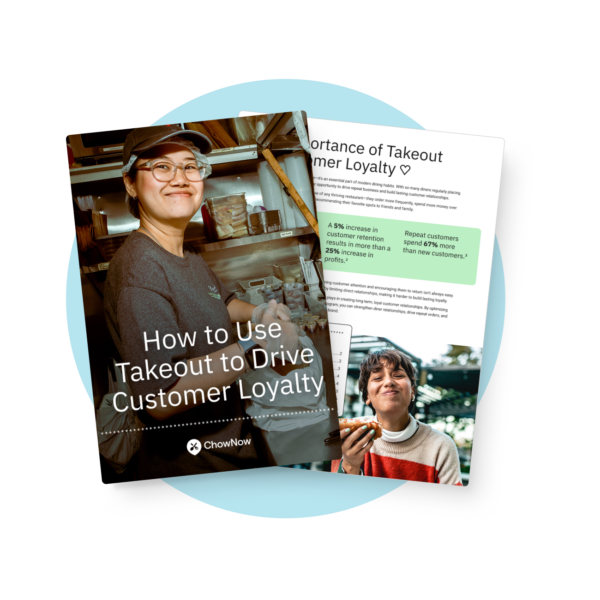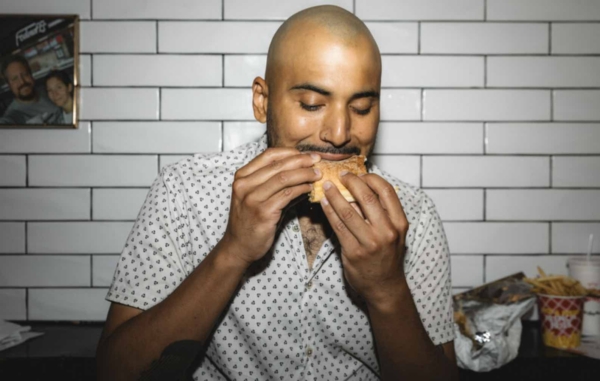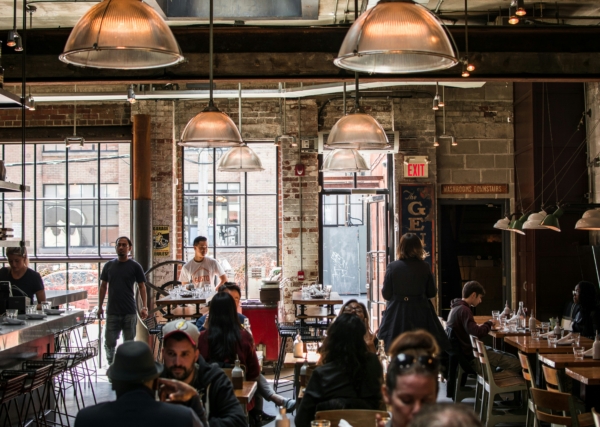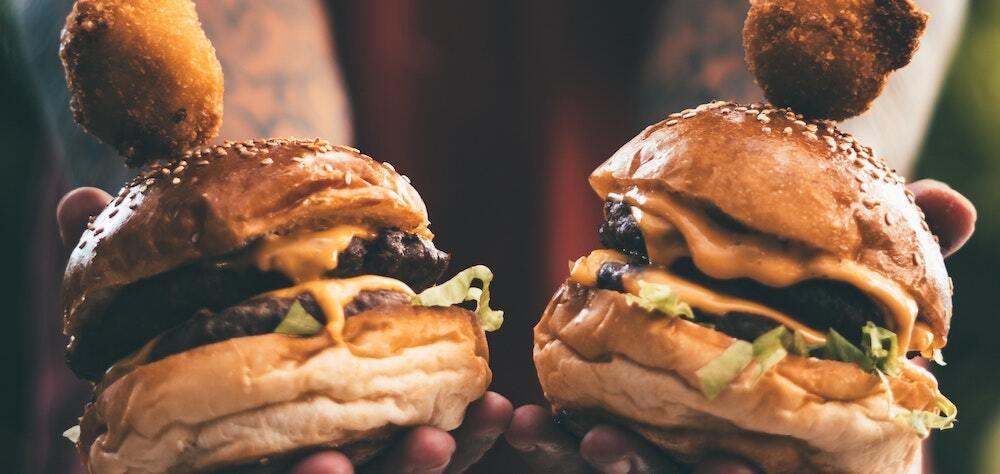3 Restaurant Loyalty Program Ideas That Drive Sales & Retention
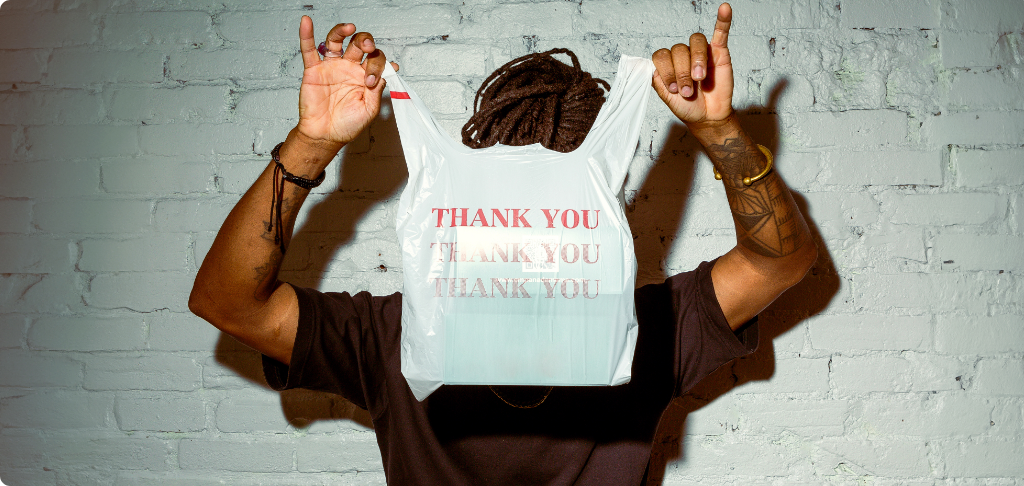
In the highly competitive restaurant world, repeat customers are an invaluable part of your business. Loyal customers are more likely to order frequently, place larger orders and recommend your restaurant to friends and family. Plus, it’s significantly more expensive to attract a new customer than it is to retain an existing one—depending on the industry, studies show it can be as much as 25 times as expensive. It’s vital to retain repeat customers, and one of the best ways to do that is with a restaurant loyalty program.
These programs keep diners invested and eager for seconds, thirds and beyond. Whether it’s through discounts, free items or other special offers, the goal is to keep your restaurant at the top of a customer’s mind. According to customer surveys, 47% of participants say they use their restaurant loyalty program memberships several times per month. That’s a significant benefit to your business with relatively little investment from you.
Restaurant Loyalty Program Benefits
You may be surprised to learn there are more advantages to a restaurant loyalty program than simply increased profits! Here are the key benefits:
- Increase customer retention.
- First and foremost, loyalty programs encourage customers to keep coming back, which gives you regular and predictable revenue. Building a relationship with customers, even through transactional offers like discounts, can influence them to choose you over your competitors.
- Increase average order value.
- When they’re motivated to accrue rewards, customers tend to order more per visit. Loyalty programs are also a great opportunity to upsell customers. For example, you can offer a free item with the purchase of a specific, more expensive item or create a loyalty program where more expensive purchases make it easier for diners to earn rewards. Such offers can be used to highlight new or seasonal items as well.
- Gain valuable customer insights.
- You are essentially conducting targeted customer research and offering discounts at the same time! Loyalty programs can help you track customer preferences and habits, which can inform not only your loyalty program structure but your overall menu as well.
Top Three Types of Loyalty Programs
Here are three of the most common and successful ways to implement a restaurant loyalty program. They each have their own advantages and challenges so consider what works best for your business goals.
Digital Punch Card
With a punch card loyalty program, customers receive a digital “stamp” or “punch” for either each order placed or for each order of a specific item. After collecting a certain number of punches, the customer earns a reward like a free item or discount. Some restaurants still use physical punch cards, but digital is far more convenient for both customers and businesses.
There is a ton of flexibility in what rewards you offer. For example, a coffee shop might offer a free cup of coffee after a customer purchases ten cups. Or a restaurant might offer a free appetizer after five online orders. It could even be as simple as: place ten orders to get 50% off your next purchase.
Here are some of the main advantages to digital punch cards.
- They’re easy for diners to understand.
- It establishes a clear reward and a clear path to achieve that reward, ultimately encouraging numerous repeat visits.
- They’re convenient for restaurant staff.
- It’s easy to initially set up and requires minimal maintenance. It’s particularly valuable for smaller or independent establishments to develop a foothold in diners’ minds.
- Gamification is naturally engaging.
- For many people, collecting tokens or stamps is inherently engaging. Digital punch cards make ordering from your restaurant a game that customers will want to play.
Any loyalty program comes with challenges too. Here are some aspects to consider with digital punch cards.
- Be mindful of per-item setups.
- If you only reward one type of item, you might miss out on loyal customers who prefer different products. However, this is also what makes digital punch cards so convenient for businesses that mainly serve one type of item, such as coffee shops and pizzerias.
- Beware reward threshold imbalance.
- You don’t want the reward to be so easy to achieve that you’re constantly giving away products, and it also shouldn’t be so difficult that customers lose interest entirely. Your sales history and customer research can help you find the right balance.
- Lack of personalization.
- Punch cards are a one-size-fits-all kind of reward, so you can’t tailor it to each diner’s specific tastes. Plus, once your reward structure is set, it’s hard to change without upsetting some customers. Digital punch cards are great for targeting a broad base, but not necessarily specific customers.
Points-Based Loyalty Program
In a points-based system, customers earn points for every purchase and can redeem those points for all manner of rewards, such as free items, discounts or other exclusive offers.
You can set the exchange rate or the rewards to whatever makes the most sense for your business. For example, you could make one dollar spent earn a customer one point. Customers could then redeem 50 points for a free appetizer, 100 points for a free dessert or 150 points for a free entrée. Rewards can be tied to specific items on your menu, such as 50 points for free fries or 75 points for free onion rings. You could also set a similar tiered system with discounts: 100 points gets $5 off a purchase, 200 points gets $15 off, etc.
Points-based loyalty programs come with their own unique advantages.
- Flexibility of rewards.
- Customers are able to choose how they spend their points, which makes it a more personalized reward. Diners are more likely to engage with a loyalty program like this if they can earn exactly what they want.
- High purchase encouragement.
- By linking the reward system to the total dollar amount spent, you’re directly encouraging customers to spend more in order to earn rewards. This system automatically incentivizes diners to make bigger purchases.
There are of course some challenges to be aware of as well.
- Beware reward threshold balance.
- Like the digital punch card system, you need to carefully balance the number of points needed to redeem rewards to keep customers engaged without eating into your own profits. Look at your own sales trends to find the ideal range that ensures diners can realistically earn rewards at a rate you can afford.
- Tracking points is complex.
- Unlike the digital punch card system, tracking points requires more effort from both diners and your employees. Diners need to be able to see the full rewards list and track their own points, while staff needs to know how to redeem the rewards. Any confusion on either end of the transaction could discourage diners from using your loyalty program.
Subscription or Membership Loyalty Program
In a subscription or membership model, diners pay a recurring fee—usually monthly or annually—to receive exclusive benefits like discounts, free items or other unique offers like access to special events.
The rewards you offer through a subscription can be any benefit you’re comfortable offering. It could be as simple and direct as 5% off every purchase or free size upgrades, such as a medium drink to a large drink. You could also offer exclusive early access to new menu items or host a special preview event just for members.
Here are the main advantages to the subscription or membership program.
- Guaranteed revenue.
- Since customers pay up-front for a subscription, you gain revenue automatically, unlike other loyalty programs. This is a great way to maintain regular cash flow, especially during periods of slow sales.
- Higher commitment means higher engagement.
- Diners are much more likely to order from your restaurant if they already have an incentive, i.e. taking advantage of their subscription. They want to get their money’s worth, which means more frequent and higher value orders.
- Exclusivity boosts loyalty.
- Everyone likes to be part of a club! By making your loyalty program feel more exclusive, customers will be more eager to engage with it and will be more invested in choosing your restaurant over competitors.
Be aware of the challenges that also come with a subscription model.
- Higher customer expectation.
- Because of the upfront cost, diners are more likely to have high expectations for your subscription loyalty program. If those expectations aren’t met, customers could cancel or leave dissatisfied reviews.
- Difficulty to sign up new customers.
- This loyalty program has an upfront commitment, which means you need to do more work to convince diners to participate. The easiest way to combat this is to have clear benefits that diners can easily understand.
- Higher maintenance costs.
- In general, subscriptions require more work to maintain. Since the customer’s benefits are constantly ongoing, your business needs to constantly meet their expectations with valuable perks. If you’re offering something like early access or exclusive menu items, that can result in a lot more work.
No matter what kind of loyalty program you choose to use, your goal is to build a loyal customer base that makes regular, predictable purchases. Their engagement is the bread and butter of your business. A restaurant loyalty program is a fantastic tool to entice diners, but remember to use the program that works best for you. Every loyalty system requires some degree of investment from your marketing budget and your time, so pick the one that offers you the best rewards for your efforts.
